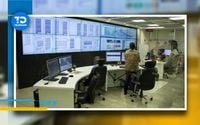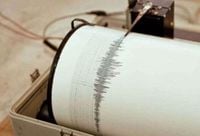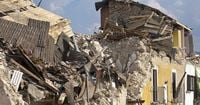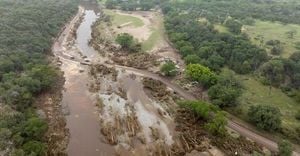Mexico is a country that constantly grapples with seismic activity, a situation rooted in its geographical location within the Pacific Ring of Fire. The Servicio Sismológico Nacional (SSN) has been tasked with monitoring seismic movements across the nation, providing crucial data to both authorities and the public. This ongoing vigilance is essential, especially as the country experiences hundreds of earthquakes each year, many of which go unnoticed by the general population.
On April 1, 2025, the SSN reported a series of earthquakes, with the most significant being two tremors of magnitude 3.9 recorded near Tecpan, Guerrero, and Cintalapa, Chiapas. These quakes were part of approximately 21 seismic events reported throughout the day, highlighting the persistent activity in this tectonically active region. In fact, the SSN's daily reports serve as a vital resource for citizens, detailing the location, magnitude, and depth of each earthquake.
Mexico's seismic landscape is shaped by the interaction of five major tectonic plates: the North American Plate, the Pacific Plate, the Cocos Plate, the Caribbean Plate, and the Rivera Plate. This interaction creates a complex network of faults and fractures in the Earth's crust, making the country one of the most seismically active in the world. According to SSN, "Mexico is located in a zone of high seismic activity, between four tectonic plates." This high degree of tectonic interaction means that earthquakes can occur frequently, often without warning.
Historically, Mexico has seen some of the most devastating earthquakes on record. The strongest earthquake in the nation's history occurred in 1985, registering a magnitude of 8.1 and causing significant destruction in Mexico City. Such events underscore the importance of preparedness and awareness among the population. The SSN, established on September 5, 1910, has played a crucial role in monitoring these seismic events and providing timely information to mitigate risks.
In addition to monitoring seismic activity, the SSN also promotes the use of advanced seismic alert systems. Mexico boasts one of the most sophisticated systems in the world, capable of notifying residents seconds before an earthquake strikes. This system has proven invaluable in reducing potential damages and saving lives during seismic events.
On the day of the reported earthquakes, the light rail in Guadalajara continued operations despite the seismic activity, demonstrating the resilience of infrastructure and the effectiveness of safety protocols in place. The SSN's reports are not only vital for public awareness but also for maintaining public safety in transportation systems.
As the SSN continues to provide updates, it is essential for citizens to remain informed about safety protocols in the event of an earthquake. Recommendations from the Centro de Prevención de Desastres (CENAPRED) include maintaining calm, seeking shelter under sturdy furniture, and turning off electrical appliances and gas valves during an earthquake. These guidelines are crucial for minimizing injuries and ensuring safety during seismic events.
Furthermore, it's worth noting that most of the strongest earthquakes in Mexico originate from marine zones, particularly in the Pacific Ocean. This geographic reality adds another layer of risk, as it can lead to tsunami threats following significant underwater seismic events. The SSN and CENAPRED continually emphasize the importance of public education regarding earthquake preparedness, especially in coastal areas.
In summary, Mexico's seismic activity is a constant reminder of the power of nature and the importance of preparedness. The SSN's diligent monitoring and reporting efforts are crucial in ensuring that the public remains informed and safe. With hundreds of small earthquakes recorded annually, many of which are imperceptible, the SSN's work is more important than ever. As the country continues to navigate its seismic landscape, public awareness and readiness will be key in facing the challenges posed by these natural phenomena.
As Mexico looks to the future, the ongoing development of earthquake preparedness and response strategies will be vital. The SSN remains committed to its mission of monitoring seismic activity and educating the public, ensuring that citizens are equipped with the knowledge and tools needed to respond effectively to earthquakes. With a proactive approach to earthquake readiness, Mexico can continue to mitigate the risks associated with its unique geological position.







